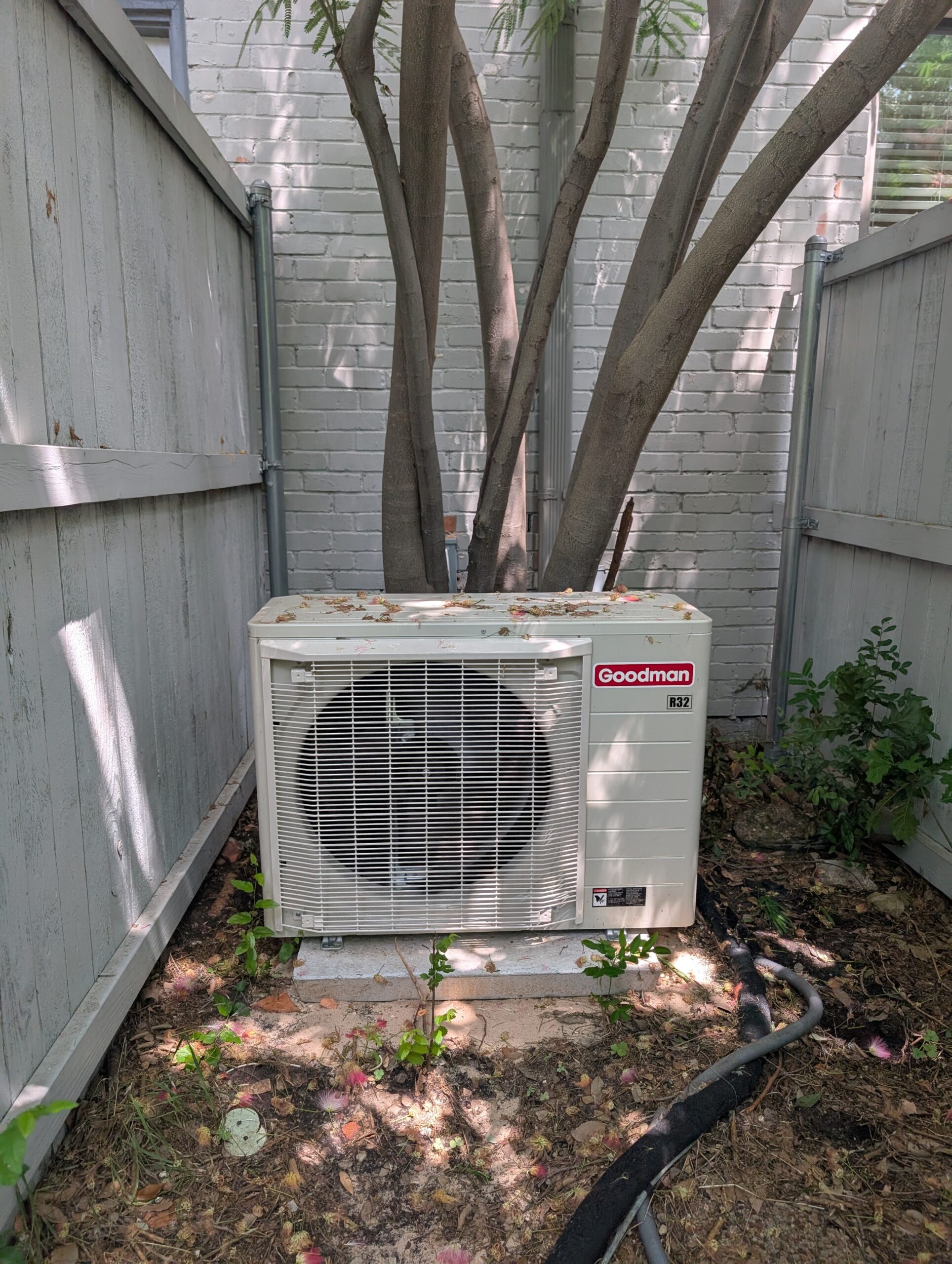Keeping Cool and Cutting Costs: Why VRF Systems are a Smart Choice for Dallas-Fort Worth Businesses
Running a small business in the Dallas-Fort Worth area means juggling many priorities. From keeping customers happy to managing expenses, every decision impacts your bottom line. One area that often gets overlooked, but plays a crucial role in both customer comfort and operational costs, is your HVAC system. If you’re a small business owner considering an upgrade or replacement, it’s time to learn about Variable Refrigerant Flow (VRF) systems – a game-changer in commercial HVAC technology.
As Truficient Energy Solutions, we specialize in helping businesses like yours find the most efficient and cost-effective HVAC solutions. We’ve seen firsthand the positive impact VRF systems have on businesses in our community. Let’s dive into why VRF might be the right choice for you.

What is a VRF System?
Traditional HVAC systems often operate on an “on/off” cycle, blasting full power regardless of the actual cooling or heating demand. VRF systems, on the other hand, are much more sophisticated. They use a refrigerant as the cooling and heating medium and employ a variable speed compressor to control the flow of refrigerant to multiple indoor units. This allows for precise temperature control in different zones or areas within your building.
Why VRF Systems are Ideal for Small Businesses
For small business owners in DFW, VRF systems offer a compelling combination of benefits:
- Unmatched Energy Efficiency: This is where VRF truly shines. These systems can reduce energy consumption by a staggering 40% to 50% compared to traditional HVAC systems. How? By only using the energy needed to meet the specific heating or cooling demands of each zone. Studies demonstrate that heat pump VRF models offer significant annual energy savings potential compared to traditional rooftop units. This translates directly to lower utility bills and increased profitability.
- Personalized Comfort: Imagine having employees arguing over the thermostat. With VRF, those days are over. Each zone has independent temperature control, allowing for personalized comfort for employees and customers with varying preferences. This leads to increased productivity and a more welcoming environment.
- Space-Saving Design: In commercial spaces, every square foot counts. VRF systems are remarkably compact, requiring less space for equipment compared to bulky traditional systems. This frees up valuable space for other business needs.
- Quiet Operation: Noisy HVAC systems can be a major distraction in an office or retail environment. VRF systems operate at very low noise levels, some as low as 25 decibels, creating a more pleasant and productive atmosphere.
- Flexibility and Scalability: As your business grows, your HVAC needs may change. VRF systems are designed to be flexible and scalable. They can be easily adapted to different building layouts and expanded as needed, making them a future-proof investment.
- Improved Air Quality: Many VRF systems incorporate advanced filtration systems that remove allergens and particles from the air, contributing to a healthier and more comfortable indoor environment.
- Simultaneous Heating and Cooling: A unique advantage of some VRF systems is their ability to provide heating to one zone while simultaneously providing cooling to another. This is particularly useful in spaces with varying temperature requirements, such as a restaurant with a hot kitchen and a cool dining area.
- Lower Maintenance Costs: Due to their sophisticated design and fewer moving parts, VRF systems generally require less maintenance and experience fewer breakdowns compared to traditional systems.
- Integration with Smart Building Systems: Modern VRF systems can be easily integrated with building management systems, allowing for even greater control and optimization of energy usage.
VRF vs. Traditional HVAC: A Head-to-Head Comparison
Let’s break down how VRF stacks up against traditional systems:
- Energy Consumption: VRF systems are significantly more energy-efficient, often reducing energy use by 40-50%.
- Compressor Operation: VRF systems use variable speed compressors, while traditional systems use on/off compressors.
- Load Matching: VRF systems precisely match the load requirements, while traditional systems often run at full capacity.
- Zoning Capability: VRF offers independent zone control; traditional systems struggle with consistent temperatures across zones.
- Simultaneous Heating/Cooling: Some VRF systems offer simultaneous heating and cooling; traditional systems typically don’t.
- Long-Term Savings: While VRF has a higher initial cost, long-term energy savings can be substantial.
Addressing the Concerns: Upfront Costs and Technician Availability
It’s true that the initial investment for a VRF system is generally higher than traditional systems. However, the long-term energy savings and reduced maintenance costs often result in a quicker return on investment.
Another point to consider is the availability of qualified technicians. While VRF technology is relatively newer to the US market, the number of trained technicians is rapidly growing. Major manufacturers like Mitsubishi, Daikin, and LG invest heavily in training programs to ensure technicians are equipped to install and service these systems. As Truficient Energy Solutions, we are committed to staying up-to-date with the latest VRF technology and training to provide our clients with expert service.
VRF vs. Mini-Splits: What’s the Difference?
While both VRF and mini-split systems fall under the category of ductless HVAC technology and share some similarities, there are key distinctions that make them suitable for different applications.
- Capacity and Scale: Mini-splits are typically designed for smaller spaces or individual rooms. They usually connect one outdoor unit to one or more indoor units (up to about five). VRF systems, on the other hand, are designed for larger commercial buildings with multiple zones. They can connect a single outdoor unit to numerous indoor units (often exceeding 50), providing greater capacity and flexibility.
- Zoning and Control: Both systems offer zoning capabilities, but VRF systems take it a step further. Mini-splits generally allow for individual temperature control in each zone, but all indoor units must operate in the same mode (either heating or cooling). VRF systems, particularly heat recovery VRF, can provide simultaneous heating and cooling to different zones, offering unparalleled flexibility.
- Piping and Refrigerant Flow: Mini-splits typically use a simple two-pipe system to connect the outdoor and indoor units. VRF systems can use either a two-pipe or three-pipe system. Three-pipe VRF systems allow for heat recovery, where heat extracted from one zone can be used to heat another zone, further enhancing energy efficiency.
- Application: Mini-splits are commonly used in residential settings, small offices, or room additions. VRF systems are more suitable for larger commercial buildings, office complexes, retail spaces, and other applications with diverse heating and cooling needs.
In essence, mini-splits can be considered a smaller-scale version of VRF technology. VRF systems offer greater capacity, flexibility, and advanced features like heat recovery, making them a more comprehensive solution for larger commercial applications.
Our Experience with VRF
From our experience installing VRF systems in the Dallas-Fort Worth area, we’ve seen firsthand the incredible energy efficiency and comfort they provide. Business owners and tenants alike appreciate the precise temperature control, quiet operation, and lower utility bills.
Is VRF Right for Your Business?
If you’re a small business owner in the Dallas-Fort Worth area looking for a highly efficient, comfortable, and flexible HVAC solution, VRF is definitely worth considering. It’s an investment that can pay off significantly in the long run.
Contact Truficient Energy Solutions today for a consultation. We can help you assess your needs and determine if a VRF system is the right fit for your business.








